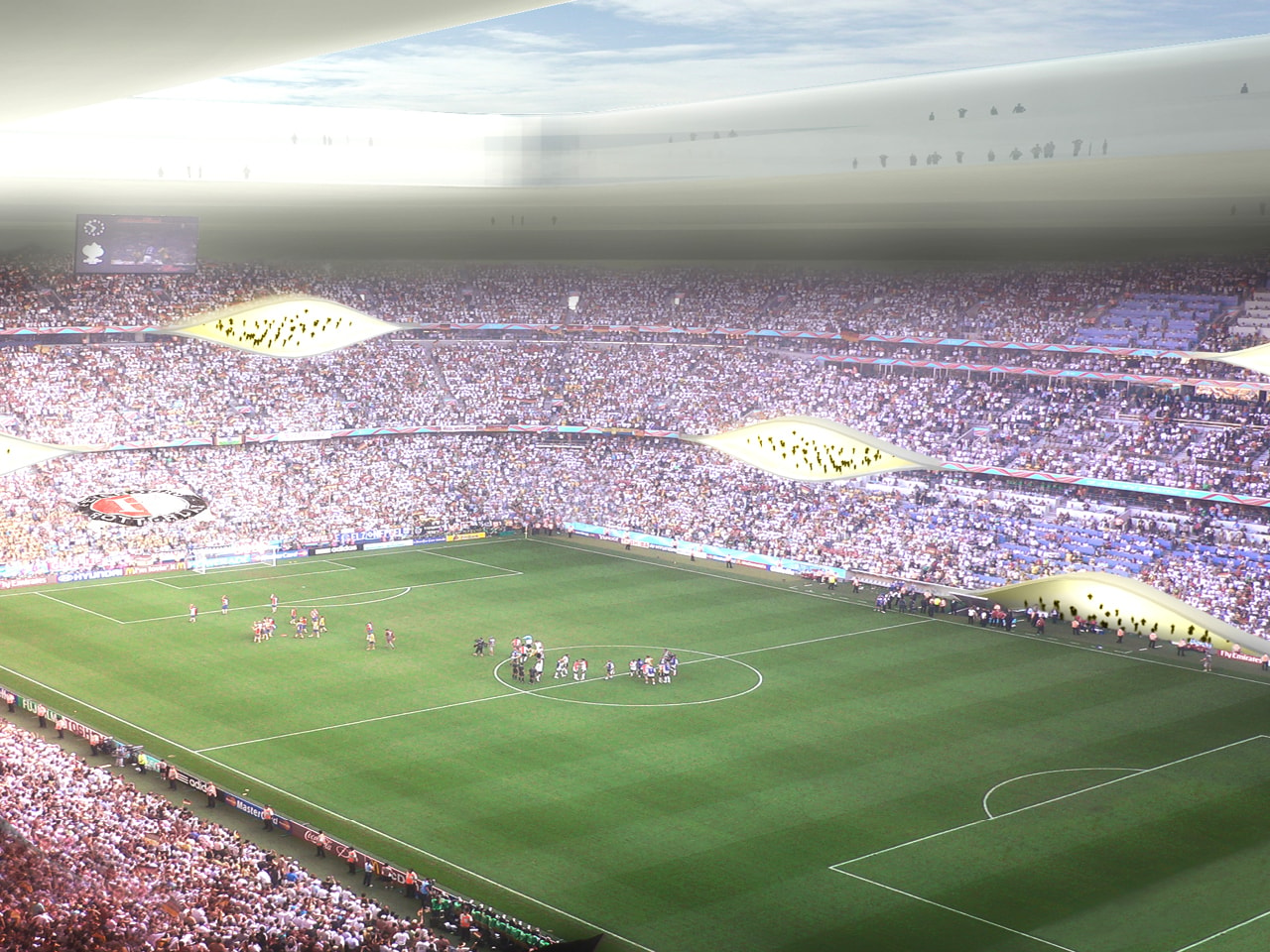
De Nieuwe Kuip
Following a recent renovation of Rotterdam’s famous Feyenoord football club stadium, De Kuip (the bowl), it still sits amid mind-numbing expanses of deserted parking spaces, completely seperated from the city. The stadium should be part of animated city life, an emblem of the people. In 2004 MVRDV and Bouwhaven started an initiative to build a new stadium at an iconic location at the Maas, making it visible and accessible from many places in the city.
- Location
- Rotterdam, Netherlands
- Status
- Design
- Year
- 2005–
- Client
- Initiated by MVRDV and Studio Bouwhaven
- Programmes
- Sports
- Themes
- Architecture, Public, Transformations, Urbanism
De Kuip (the bowl), the home of Rotterdam’s famous Feyenoord football club is a 70 year old stadium, a fantastic monument that has honoured many heroes. Since a recent renovation this heroic atmosphere is left only inside the stadium. Its surroundings are mind-numbing, the monument sits in a desert of parking spaces, a comparison with an Atlanta shopping Mall is apparent: the stadium is not integrated in the city; it should be part of animated city life, an icon of the people. Currently plans for renovation or demolition and new construction are under way. The easy option is to build a new stadium right next to the old one. But should these plans not be used for a more comprehensive gesture for Rotterdam? A new stadium should mean progress for the neighbourhood, the city and the football club. A new temple for Feyenoord needs to be visible from many places in the city. The proposed site next to the old Kuip is the contrary: hidden and anonymous.
Rotterdam accompanies the river Rhine which is locally called the ‘Maas’ on its last kilometres to the sea. From the mouth of the Maas to the city centre the city has constructed one beacon after the other, the Europoort, the Maasland Barrier, the container and petro port, the city centre with its bridges and the skyscrapers along the water. But in the east of the city between Willemsbridge and van Brienenoord bridge there is a nondescript area, mostly built up with anonymous housing. This is the area the new Kuip could occupy. In the bend of the river, widely visible from many sides and accessible through the already massively present infrastructure. The embankment is still in the neighbourhood Feijenoord which lent its name to the football club so the club can stay at ‘home’ and still be omnipresent in Rotterdam.
As homage to the old stadium the oval shape is recreated in the new design, including the re-use of the old chairs. But here the resemblance ends: The new stadium can be located in the river, floating on pontoons which hold the necessary parking facility for 9,000 cars. The old tribunes are then surrounded by an envelop of program holding offices, retail, sports, recreation and apartments. The new stadium will be occupied 24/7 and not only around games. The homes in the roof of the stadium allow inhabitants to watch the games live from their living rooms. Sale of the enveloped program is part of the financial plan to realize the new icon for Rotterdam. In order to connect the city even more to the stadium large openings are foreseen that display activity, let light penetrate and provide views for the different programs.
Gallery





Credits
- Architect
- Principal in charge
- Design team
- Strategy & Development
- Partners